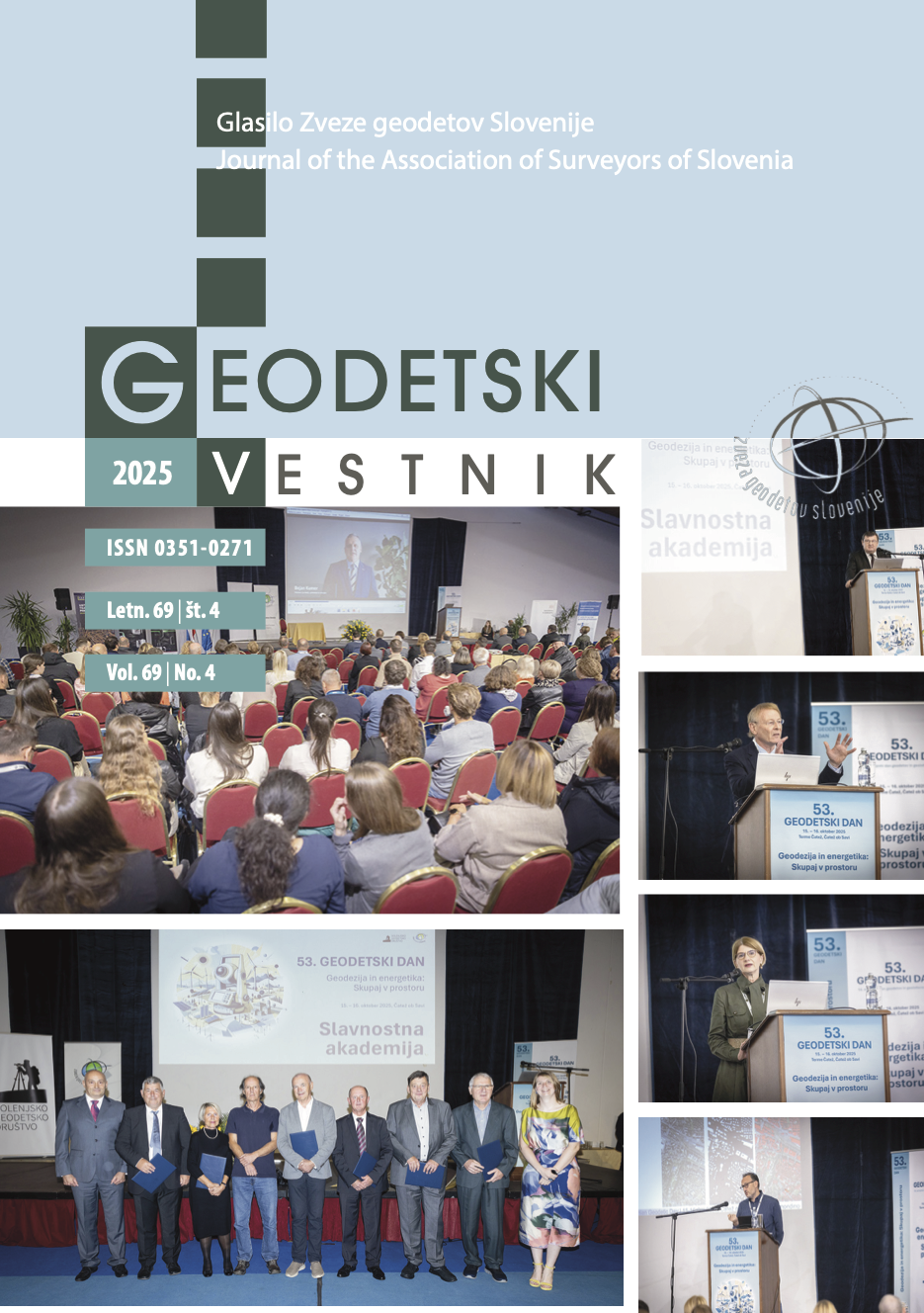
IF JCR (2023): 0.4
IF SNIP (2023): 0.487

Association of Surveyors of Slovenia
Zemljemerska ulica 12, SI-1000 Ljubljana
E-mail: info@geodetski-vestnik.com

Paper
Back to issue 60/3
Različni pristopi izračuna tirnic GLONASS-satelitov iz oddanih efemerid
Different approaches in GLONASS orbit computation from broadcast ephemeris
Author(s):
Kamil Maciuk
Abstract:
Several types of methods can solve equations of satellite motion numerically. These methods are divided into single and multi-step methods. The accuracy of each method depends directly on adopted integration step size between successive iterations. To achieve result with required accuracy it is important to maintain appropriate size of integration step. Inappropriate step size could cause local errors between iterations greater than accuracy of the method. Therefore, integration step size needs to be reduced until it does not affect accuracy of the final solution. Group of Runge-Kutta (RK) methods for solving equations of satellite motion have been analysed in this article. Five different methods: Runge Kutta 4th order, Runge Kutta 5th order and Runge Kutta Fehlberg 4th and 5th order methods were discussed. Compared to the classical Runge-Kutta integration method other methods are slower, but give results that are slightly more accurate.
Keywords:
numerical integration, GNSS, GLONASS, satellite geodesy
DOI: 10.15292/geodetski-vestnik.2016.03.455-466

Association of Surveyors of Slovenia
Zemljemerska ulica 12, SI-1000 Ljubljana
E-mail: info@geodetski-vestnik.com

